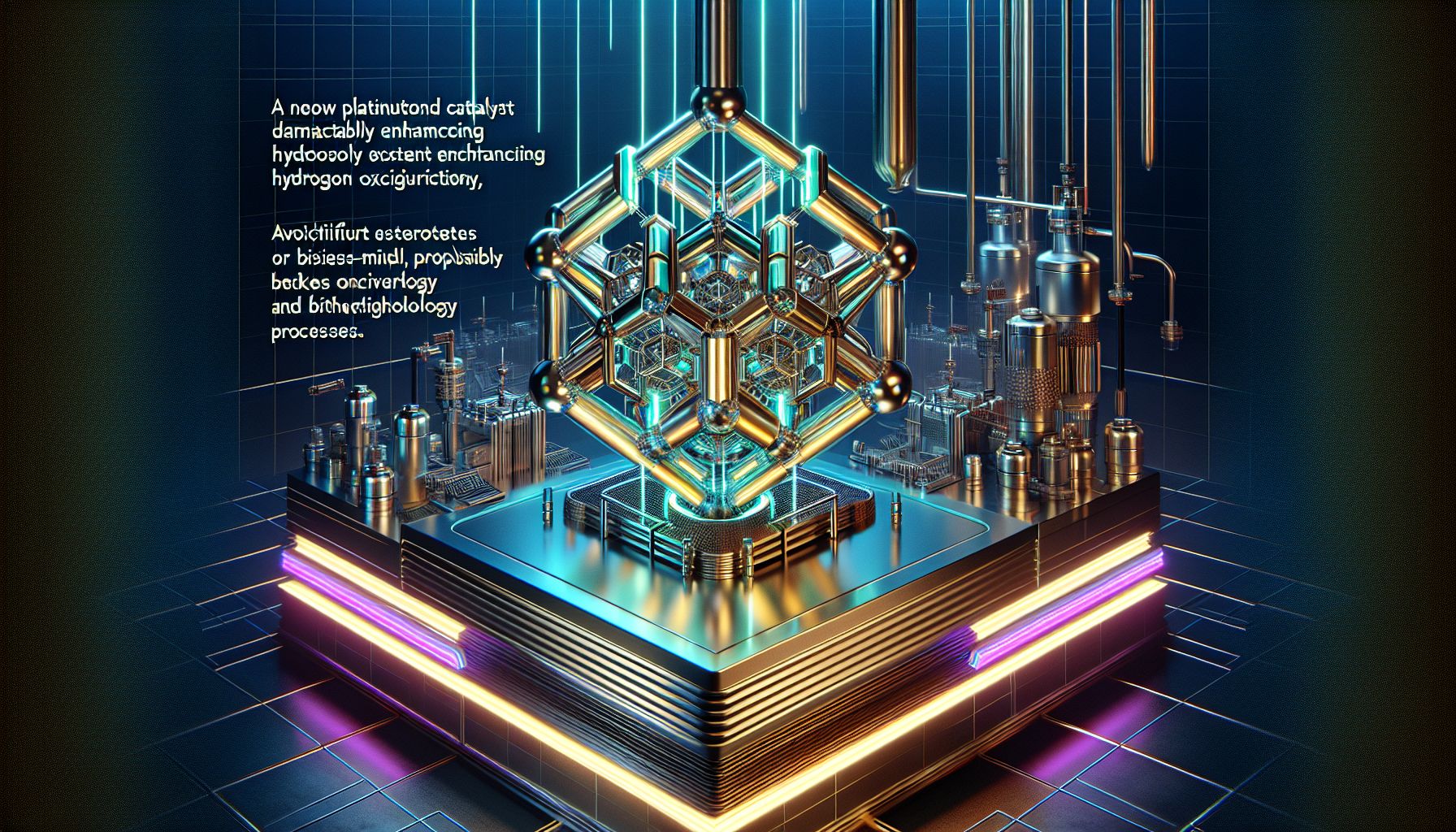Revolutionary Catalyst Model Boosts Hydrogen Oxidation Efficiency

London, Sunday, 13 July 2025.
A new platinum-gold catalyst dramatically enhances hydrogen oxidation, improving bioelectrocatalysis applications. This innovation could transform energy conversion, making biotechnology processes vastly more efficient. Why not dive in and find out more?
A Game-Changing Catalyst Design
In an exciting breakthrough, researchers have introduced a biomimetic dual-site platinum-gold catalyst to mimic NAD⁺-reducing hydrogenases. The catalyst uses the hydrogen spillover phenomenon to improve hydrogen oxidation drastically. Now, hydrogen is more than just a gas; it’s a powerhouse for bioelectrocatalysis! The dual nature of platinum and gold simulates the natural NiFe and FMN active sites respectively, replacing the traditional proton-coupled electron transfer mechanism [1].
Turning Ideas into Power
Harnessing this technology, a H2/O2 enzymatic biofuel cell has been constructed, achieving an impressive maximum power output exceeding 2.0 milliwatts per square centimetre while maintaining excellent operational stability. To put it succinctly, this catalyst doesn’t just talk the talk; it powers the power [1].
Efficiency Beyond Expectations
The standout feature of this catalyst is its unparalleled efficiency. It achieved a remarkable 100% conversion rate of NAD⁺ with 72% selectivity towards 1,4-NADH. Compared to its platinum-based predecessors, this innovation remarkably outperforms in terms of efficiency and selectivity [1].
Broader Impacts and Future Applications
This catalyst goes beyond the lab, promising significant advancements in biosynthetic processes and energy conversion. Its role could be pivotal in revolutionising the biotechnological energy systems of the future, making renewable energy more accessible and efficient [1][2].